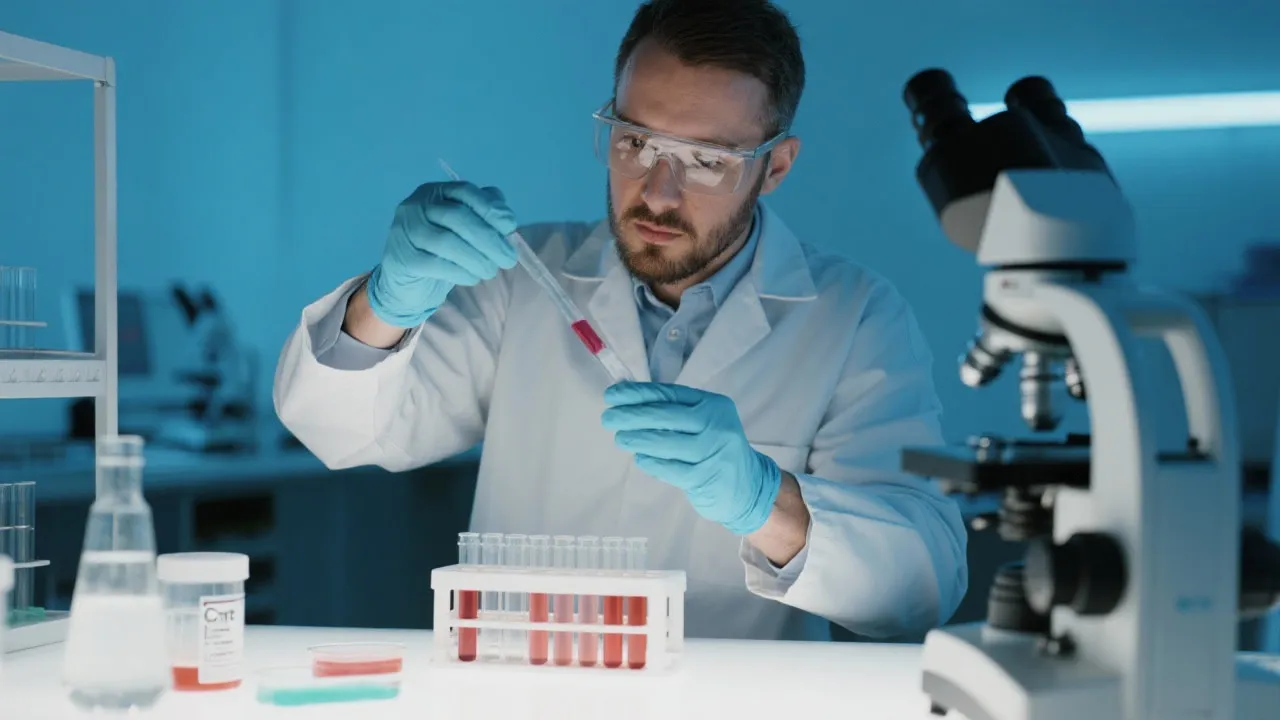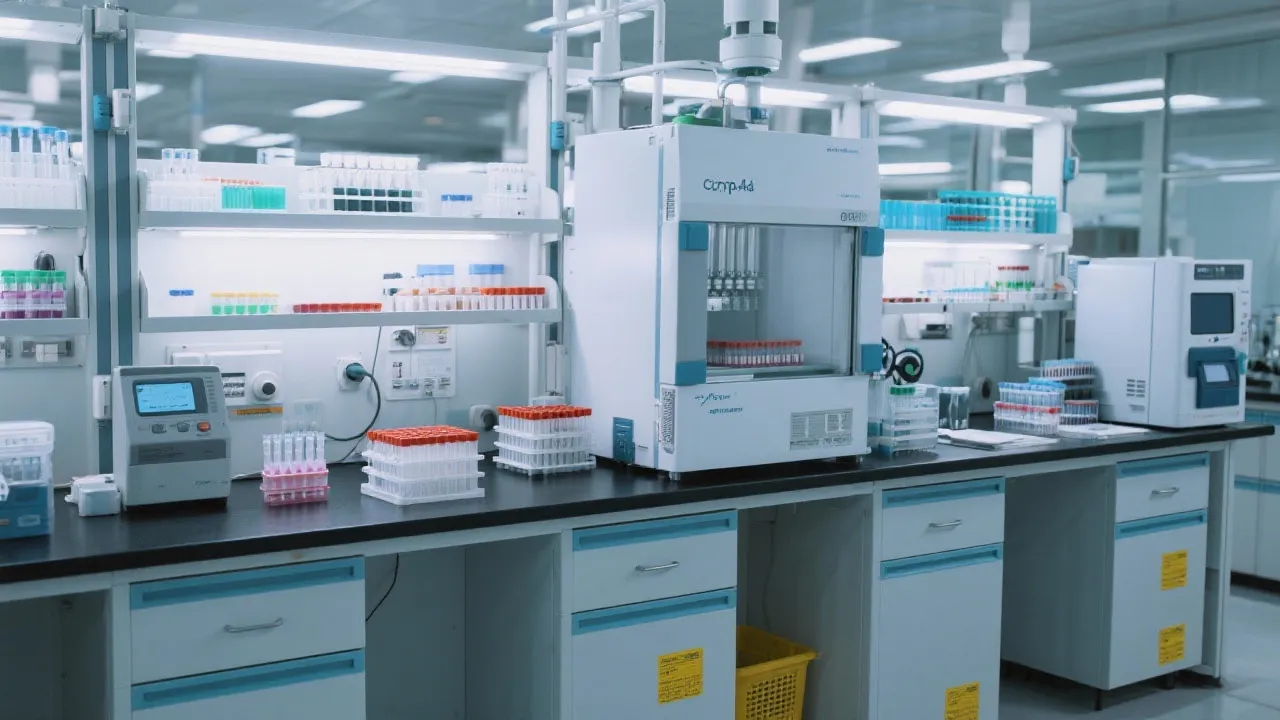Understanding Cyp1a1 Assay in Research
The Cyp1a1 Assay is crucial in the research of enzyme activities within various organisms. This assay focuses on cytochrome P450 1A1, an enzyme that plays a significant role in xenobiotic metabolism. Widely used in pharmacology and toxicology studies, it aids in understanding how substances are metabolized, contributing to drug development and safety evaluations.

Introduction to Cyp1a1 Assay
In the fast-evolving field of pharmacology and toxicology, understanding enzyme activity is a cornerstone of research. The Cyp1a1 Assay is pivotal for those studies, offering insights into the metabolism of xenobiotics. Cytochrome P450 1A1, abbreviated as Cyp1a1, is an essential enzyme that requires analysis to understand its function in metabolizing potential toxins and drugs. The significance of Cyp1a1 extends beyond mere metabolization; it is central to understanding how the human body interacts with a myriad of chemical compounds, influencing both therapeutic efficacy and toxicity.
The Significance of Cyp1a1 in Metabolic Studies
Cyp1a1 belongs to the cytochrome P450 family of enzymes, a large and diverse class of enzymes critical for the oxidative metabolism of various substrates, including drugs, environmental pollutants, and hormones. The significance of understanding this enzyme is particularly pronounced when it comes to drug safety assessments and efficacy studies. The enzyme's activity can tremendously influence the pharmacokinetics of drugs, potentially affecting dosing regimens and therapeutic outcomes. Cyp1a1 is prominently involved in the metabolism of polycyclic aromatic hydrocarbons (PAHs), which are commonly found in pollution and smoke, thus linking it to both environmental health and pharmacotherapy.
Conducting a Cyp1a1 Assay
The Cyp1a1 Assay involves several steps that ensure accurate measurement of the enzyme’s activity in various samples. Proper assay protocol includes an appropriate selection of substrates—these substrates are usually specific for Cyp1a1 and can include compounds such as 7-ethoxyresorufin or 2-aminofluorene—that mimic physiological environments. Ensuring consistency and sensitivity in the assay's readings is crucial for obtaining accurate data. Moreover, the assay design may also need to incorporate the use of appropriate controls, including protein concentration standards and inhibitors, which help distinguish specific enzyme activity from non-specific actions. The incorporation of modern technologies such as liquid chromatography-mass spectrometry (LC-MS) and fluorescence detection further enhances the capability to accurately quantify enzymatic reaction products.
Comparison Table of Cyp1a1 Assay Variants
| Assay Variant | Application | Strengths | Limitations |
|---|---|---|---|
| In-Vitro Assays | Drug metabolism studies | Highly controlled environment, reproducible results | May not replicate in vivo conditions, potential variability in enzyme source |
| In-Vivo Assays | Toxicology studies | Realistic biological context, comprehensive interaction insights | Complex and variable outcomes, ethical considerations, higher costs |
Critical Conditions for Assay Accuracy
Executing a Cyp1a1 Assay demands stringent conditions to maintain data integrity. Variables such as temperature, pH, and substrate concentration must be meticulously controlled. The pH of the assay medium is crucial as it can significantly affect enzyme activity; Cyp1a1 typically operates optimally around neutral pH. Moreover, employing purified enzymes or utilizing cell culture methodologies can significantly impact the reliability of assay results. The selection of an appropriate reaction buffer and the optimization of reaction time are other critical factors influencing the accuracy of the assay. Any deviations from these parameters can lead to profound effects on kinetic measurements, potentially skewing the interpretation of data. Therefore, a thorough understanding of the enzyme kinetics and the physiological relevance of the substrates used is essential for accurately characterizing Cyp1a1 activity.
Application in Drug Development
The Cyp1a1 Assay is immensely beneficial in the early stages of drug development. Understanding the bioactivation of pharmaceutical compounds can aid in identifying potential metabolites which may be toxic, carcinogenic, or lead to adverse drug reactions. By determining potential drug-drug interactions and metabolism pathways, the Cyp1a1 Assay allows pharmaceutical companies to forecast adverse effects, tailoring safer and more effective medication therapies. For instance, data obtained from Cyp1a1 assays can guide dosing strategies and inform clinical trial designs, allowing for more precise predictions of pharmacokinetics in diverse populations. Moreover, with the increasing complexity of drug compounds, monitoring the involvement of Cyp1a1 in metabolic networks becomes essential in ensuring drug efficacy while minimizing side effects.
Challenges in Cyp1a1 Assay Implementation
Despite its numerous benefits, the Cyp1a1 Assay presents challenges, including technical difficulties in establishing the correct assay conditions and interpreting data with precision. Variability in liver microsomal preparations or cell lines expressing Cyp1a1 can lead to inconsistencies in data, making replicability a concern. Moreover, the assay's conditions must mimic physiological scenarios as closely as possible, which can prove challenging. For example, the presence of other metabolic enzymes can naturally complicate interpretations, as they may also process substrates meant for Cyp1a1. Complexities in human metabolism, genetic variations in populations, and pre-existing conditions further complicate these assessments. Therefore, a thorough understanding of both the assay and the biology of the enzyme is critical for researchers in the field, underscoring the necessity for standardization and validation processes that cater to these complications.
Expert Insights on the Future of Cyp1a1 Assays
Experts predict an increasing role for Cyp1a1 Assays due to the growing complexity of pharmaceutical compounds. The advancement of biotechnologies and pharmaceutical sciences points toward a future where the Cyp1a1 Assay could integrate with high-throughput screening methods and computational toxicology models to enhance its predictive capabilities. As the focus shifts towards personalized medicine, this assay’s ability to illuminate metabolic pathways will be vital in crafting individualized treatment paradigms. Additionally, the development of gene-editing technologies like CRISPR could facilitate the exploration of genetic polymorphisms related to Cyp1a1, helping to assess individual risks for drug metabolism and adverse reactions. The role of Cyp1a1 in the metabolism of environmental contaminants further indicates the assay's potential expansion outside of drug development, impacting ecological health assessments.
FAQs
What is the primary purpose of a Cyp1a1 Assay?
The primary purpose is to assess the metabolic activity of cytochrome P450 1A1, informing studies on drug metabolism and toxicity, ultimately contributing to improved therapeutic strategies.
How does the Cyp1a1 Assay impact drug development?
It influences drug safety and efficacy profiling by understanding metabolism pathways, aiding in designing better drugs that minimize adverse effects while maximizing therapeutic benefits.
What factors can affect the accuracy of a Cyp1a1 Assay?
Factors such as environmental conditions (temperature and pH), substrate concentration, and the purity of enzyme preparations are critical. Maintaining these parameters ensures reliable data reflecting the metabolic activities of Cyp1a1.
How does Cyp1a1 relate to personalized medicine?
The assay helps detail individual metabolic responses to drugs and environmental chemicals, paving the way for more personalized therapeutic strategies tailored to genetic and environmental contexts.
The Cyp1a1 Assay continues to be an indispensable tool in bio-research, bridging the gap between toxicology, pharmacology, and personalized medicine. Its role in determining metabolic pathways supports groundbreaking advances in health science and drug development, ensuring better health outcomes. As the landscape of pharmacology evolves, the significance of the Cyp1a1 Assay will undoubtedly expand, highlighting the critical need for ongoing research and innovation in this field.
Future Directions for Cyp1a1 Research
The future of Cyp1a1 research is poised for significant advancements driven by technological innovations and a deeper understanding of its biological role. Researchers are increasingly focusing on the enzyme's significance beyond classic drug metabolism, exploring its involvement in cancer biology, environmental toxicology, and personalized medicine. For example, studies examining Cyp1a1 as a biomarker for cancer susceptibility are gaining traction, especially considering its role in the bioactivation of pro-carcinogens found in tobacco smoke and certain foods. Furthermore, the exploration of natural compounds that might modulate Cyp1a1 activity opens new avenues for therapeutic interventions. The development of selective inhibitors could lead to protective strategies against toxin-induced cellular damage, enhancing our understanding of xenobiotics during drug development.
Integration of Cyp1a1 Assays with Omics Technologies
As the field of systems biology expands, integrating Cyp1a1 assays with genomics, proteomics, and metabolomics presents a promising frontier. Omics technologies can elucidate the relationships between Cyp1a1 activity and the broader metabolic networks within which it operates. This comprehensive analysis could provide insights into individual variations in drug metabolism linked to genetic polymorphisms associated with Cyp1a1 and other enzymes. Such integrative approaches could lead to more effective biomarker discovery and the establishment of personalized medicine protocols based on an individual's metabolic profile. Collaborative efforts from pharmacologists, toxicologists, and bioinformaticians will be essential in harnessing these technologies for Cyp1a1 research.
Educational and Training Opportunities
As the demand for expertise in the field of pharmacology continues to rise, educational institutions and organizations are beginning to offer specialized training programs focusing on enzymatic assays like Cyp1a1. These programs focus on both theoretical and practical aspects of enzyme activity assessments, preparing future researchers to tackle challenges in drug development and toxicology. The incorporation of hands-on training in laboratory techniques, data analysis, and assay modification will equip students with valuable skills to contribute to the growing field effectively. Additionally, workshops and seminars dedicated to Cyp1a1 research could foster collaboration between academia and industry, facilitating the translation of research findings into clinical applications.
Conclusion
In summary, the Cyp1a1 Assay is a crucial component in the fields of pharmacology and toxicology, realizing its significance in various applications from drug development to personalized medicine. As research continues to illuminate the complexities of drug metabolism and the role of enzymes like Cyp1a1, the ongoing evolution of assay methodologies will remain essential. The promising integration of Cyp1a1 assays with cutting-edge technologies and approaches heralds a new era in understanding drug interactions and metabolism. Moreover, the necessity for rigorous training and educational programs is paramount to prepare the next generation of scientists equipped with the requisite knowledge and skills to explore the intricacies of enzymatic activity. Through continued research, innovation, and collaboration, the contributions of the Cyp1a1 Assay will undoubtedly play a pivotal role in advancing health science and improving therapeutic outcomes for patients worldwide.






